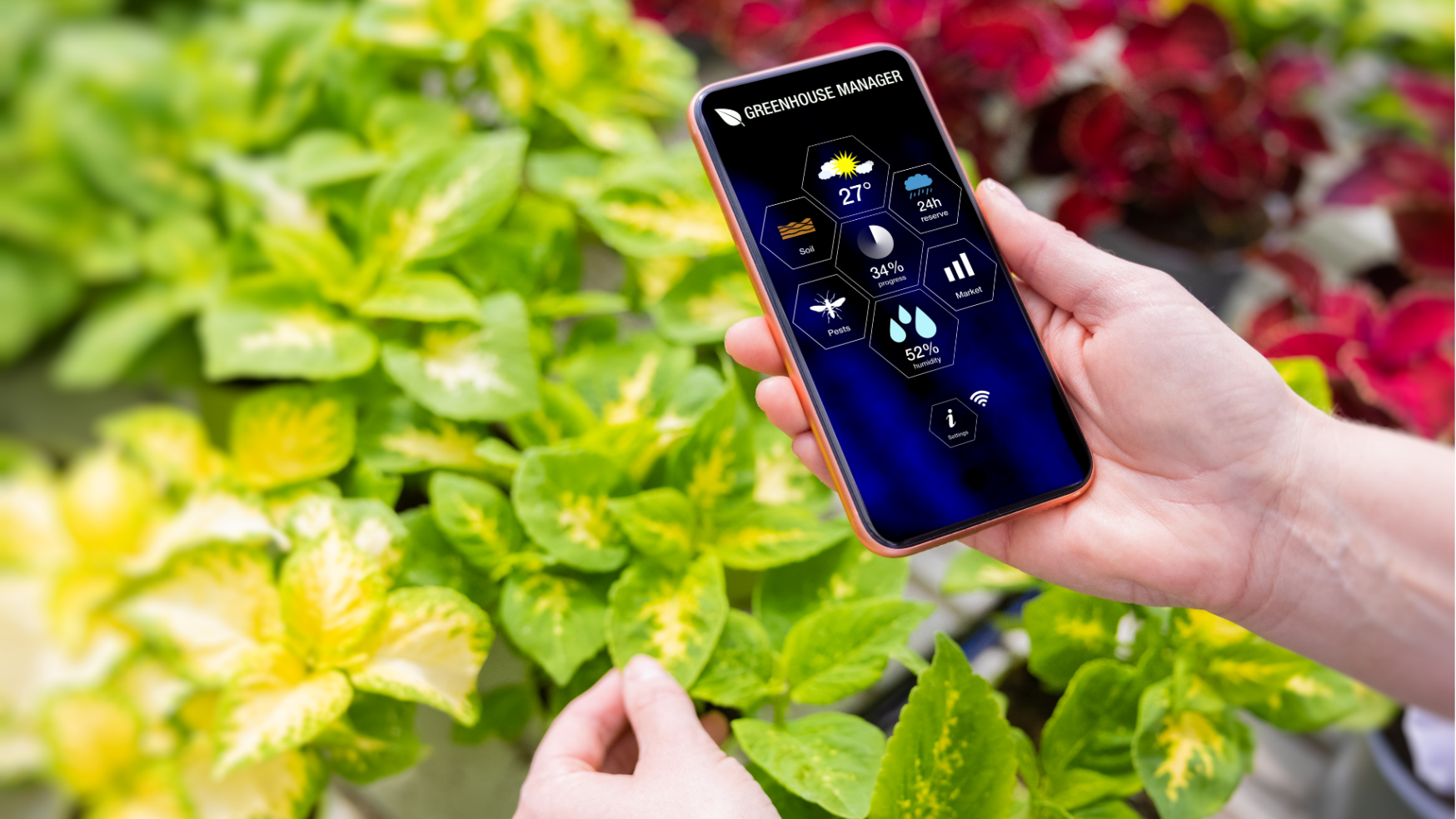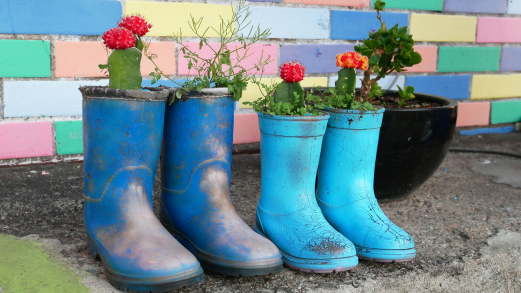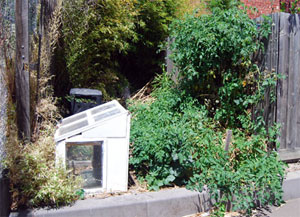 Bombs, guns, pitchforks, masks, false identities and missions under the cover of darkness… this ain’t a warzone, or a bad Tom Cruise film, this is Guerrilla Gardening, and it’s popularity is growing, both throughout Australia and the rest of the world! This is hardcore horticulture, full-on flora, seed sowing at its sexiest, plantings with purpose… and it’s darned important. But what is it, why does it exist, who’s involved, and, most importantly, were any Guerrillas harmed in the making of this story?
Bombs, guns, pitchforks, masks, false identities and missions under the cover of darkness… this ain’t a warzone, or a bad Tom Cruise film, this is Guerrilla Gardening, and it’s popularity is growing, both throughout Australia and the rest of the world! This is hardcore horticulture, full-on flora, seed sowing at its sexiest, plantings with purpose… and it’s darned important. But what is it, why does it exist, who’s involved, and, most importantly, were any Guerrillas harmed in the making of this story?
Terrorism in Reverse
A Guerrilla is, by dictionary definition,” a member of an irregular, usually indigenous military or paramilitary unit operating in small bands in occupied territory to harass and undermine the enemy, as by surprise raids”. Yup, I know what you’re thinking… what the hell has this got to do with gardening? Have these Guerrilla Gardeners declared war on our weeds, or are they the “anti-plants”? Well, in essence, they have declared war… but it is a war on ugliness, on neglected public and private spaces, and an attempt to beautify and restore pride in the urban landscape. As Guerrilla Gardening Godfather Richard Reynolds explains it’s all about “fighting filth with forks and flowers, and is essentially the illicit cultivation of someone else’s land”.
So why would they bother? Well, I guess, why wouldn’t they? Where I used to live (in inner city Melbourne), there was a neglected block next door. By neglected, I mean this thing was an eyesore. It was an ex-petrol station, which, despite a massive road frontage, was never sold or developed. So it became a dumping ground for household waste, and seemed to harbor a breeding program of both shopping trolleys and feral cats. I lived in a rented bedsit, and thus had no garden of my own… not even a balcony or space for a potted plant. Often I would sit at my grubby window, gaze across at this deserted patch of land, and long to plant it out with some herbs, vegies, fruit trees… anything that I could tend to, enjoy, eat, and that would make my view a little more appealing. And it is this same want, to beautify public space, that drives many Guerrilla Gardeners. But it can be political as well.
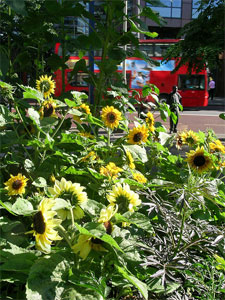
The Politics of Public Space
What is it about this style of gardening that makes it a “guerrilla” activity? Is there politics or revolution afoot? Is guerrilla gardening a modern day “love in”, a “hippie objection to modernist filth” (as blogged by Kieran Bennett), or is it simply a mob of keen plant fans wanting to pretty the city? Well, to be honest, it’s elements of all of these. Guerrilla gardeners generally work under the cover of darkness, organising “troop digs” and “actions” where keen guerrillas meet and transform an ordinary looking public (or private) space with trees, shrubs, annuals and more. They engage in on-going watering, maintenance and rubbish removal on planted sites, much of this also done under the cover of darkness. The general public are often encouraged, by signage located in the gardens, to water a guerrilla garden as they pass or collect rubbish if required. So, what’s the big deal? A couple of people whacking in some plants… where’s the harm in that?
Well, for one, it is illegal. Generally, the land that is being cultivated belongs to business, government or private parties, and, as we all know, mucking about with someone else’s property is unlawful. The word trespass springs immediately to mind. Guerrilla Gardeners should, at all times, be mindful of this, and, unless troops obtain permission to use and cultivate the land, they could end up in real strife. That said, there have been many examples of Guerrilla Gardening actions that have targeted derelict, unused or unwanted land successfully, and without prosecution. Many of these have been areas like median strips, road verges, roundabouts, and neglected areas of public housing and utilities (think train stations and bus stops).
But, as extreme as it all may appear, there are certain “rules” Guerrilla Gardeners are encouraged to abide by… a code of ethics if you like. For one, all are encouraged to leave the land they target in better condition than when they found it. This means free of weeds and rubbish, with the soil having been improved (organically of course) and appropriate plantings in place (more on that later). The land should be unused when targeted, and likely to remain unused for the duration of the vegetations lifespan, and, most of all, the garden should look nice, and be fairly low maintenance.
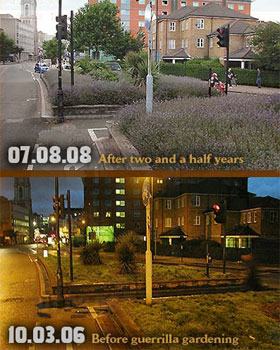
But does the garden have to be useful? Well, there are a few trains of thought on this, with many Guerrillas suggesting the improvement in aesthetics of drab and neglected urban spaces through reclaimed gardens is a useful public service. Other Guerrilla Groups are all about productive gardens; those that provide the gardeners and the general public with vegetables, herbs and fruit, and act to improve the ‘feel’ , ‘vibe’ and ‘livability’ of an urban space. Yup, it’s a contentious issue, and one that pops up fairly frequently in Guerrilla Gardening discussions.
Weed Warriors
Okay, so I’ll admit it, I’m intrigued by Guerrilla Gardening… in fact, I find it downright appealing! That said, I do have issues with the process, and here they are: I have enormous concern regarding the plant selections of Guerrilla Gardeners, both here and overseas. Sure, some of the groups are planting out edibles, but the bulk of them advocate the use of “low maintenance” “drought tolerant” plantings, those plants that will survive with a minimum of care and attention. Nothing wrong with that in theory, but I think a lack of horticultural knowledge and perhaps a limited understanding of broader global issues may see a significant number of these groups planting and spreading environmental weeds.
Consider this: 65% of invasive plants in Australia have originated from ornamental horticulture – that is, they have jumped from the backyard to the bush. Why have they been so successful? Well, many of them were sold as low maintenance, drought tolerant plants, those tough as boots garden varieties that even those with the brownest thumbs couldn’t kill… exactly what many Guerrilla gardening groups look for in their suite of plants. So, while many of these groups may think they are doing the environment a favour, the may inadvertently be contributing to a whole world of weeds.
So, what would I do if I were a Guerrilla Gardener? I would mandate that all groups, cells, pods and digs of Guerrillas make their reclaimed spaces as useful as possible. By this, I mean plant suitable, non-invasive edibles, and kick start some serious urban food forests… your suburb will thank you! If edibles are not appropriate, what on earth is wrong with planting locally native plants? These are plants indigenous to the area, are uniquely suited to the climate, topography, soil and rainfall, enhance the character of the local area, and look fantastic. Hell, you may even create some habitat and support biodiversity along the way! All gardeners should be totally aware of all local, state and national invasive plant lists, and ensure that they are not adding to the issue.
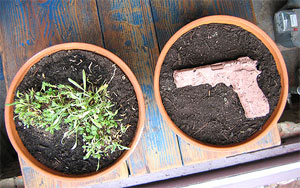
Sowing the Seeds of Dissent
Don’t fancy skulking around under the cover of darkness, planting illegal gardens on public land but still want to make a difference? As Kurt Cobain once said “load up on guns, and bring your friends”… seed guns that is! Guerrilla Gardeners worldwide have been making and launching seed guns and bombs since the seventies, and, while they may all sound a bit violent, they are actually the complete opposite. Seed bombs and guns are made of a mixture of clay, organic compost, locally native plants seeds and a touch of water, shaped by hand and left to dry out and harden. These “weapons of mass re-vegetation” are then tossed, by hand, into neglected spaces, degraded public land, and hard to plant sites. Over time, a proportion of the seeds will germinate; bringing beauty and plants to what was once an eyesore. There are stacks of references on the web that will tell you how to make them… and I have to say, it looks like fun!
Guerrilla gardeners aren’t just a mob of extremists, hardcore hippies and tie-dyed treehuggers, they are an intriguing mix of the young and the old, the plant savvy and the beginners, the ‘out there’ and the elderly… all gardening for a common purpose: to bring a little bit more beauty into the urban landscape! And I reckon… good on ’em!
Want to learn more? Check these links out:
www.abc.net.au/7.30/content/2008/s2354714.htm
www.laguerrillagardening.org
heavypetal.ca/archives/2007/03/how-to-make-seedballs
Photos
1 – A Productive tomatoe patch in an unused strip of suburbia – Melbourne – www.lastappetite.com
2 – A Guerrilla Garden smack in the middle of London, complete with sunflowers!
3 – A Guerrilla Garden, bringing life to the city, and looking top notch after two years!
4 – Shoots, roots and leaves….literally! A seed gun, the ultimate weapon in fighting urban ugliness! www.alrdesign.com
Related Articles:
Citizen Science: A Pathway to Gardening Success and Biodiversity Conservation
In recent years, the realm of science has experienced a remarkable transformation, one that invites people from all walks of life to participate…
A Sustainable Gardener’s Guide to Thrifty Gardening
Creating an eco-friendly and cost-effective garden involves more than just nurturing plants; it's about adopting a sustainable approach that…

